Generating leads is one of the toughest struggles for any eCommerce marketplace owner. According to HubSpot, 63% of marketers admit that bringing quality leads consistently is their biggest challenge. Because they need to attract not only customers but also vendors who will list their products on the marketplace.
Without a steady flow of both vendor and customer leads, even the best-designed marketplace can fail. The real difficulty lies in converting leads into active users. Salesforce reports that around 80% of leads never become actual customers. So, a balanced lead generation strategy is not just important but essential for growth.
This blog post will guide you through many practical and modern ways of how to generate leads for eCommerce marketplaces. You’ll learn how to attract vendors and customers, what tools to use, and how to measure your success effectively. So, be with us till the end.
Understanding Leads in eCommerce Marketplaces: Vendors vs Customers
Leads are the lifeblood of any business, but in a marketplace, they come in two different forms — vendors and customers. Understanding both types is key to building a balanced and sustainable platform that grows from both ends.

Vendors as Leads
In an eCommerce marketplace, vendors represent your supply side. These are the businesses or individual sellers who list their products and rely on your platform to reach new audiences. Every new vendor you attract adds more product diversity and competitive pricing, which makes your marketplace more attractive to buyers.
As the B2B eCommerce industry is growing at a 14.5% CAGR, more companies are searching for digital platforms to sell their goods. This is a golden opportunity to bring them to your marketplace by showing them the benefits of joining your network.
Customers as Leads
Customers form the demand side of your marketplace. Without them, even the best vendors will lose motivation. Customer leads are people who visit your website, browse products, or show interest in your brand but haven’t yet made a purchase. Research shows that 96% of website visitors are not ready to buy on their first visit.
This means customer nurturing plays a huge role in turning interest into action. As competition grows, it’s important to keep your customers engaged with personalized experiences, email updates, and social media interactions so they continue to return to your platform.

The Evolution of Lead Generation: Outdated Tactics vs. 2026 Essentials
Lead generation has dramatically transformed over the past decade. In the early days of online marketplaces, owners relied heavily on cold emailing, generic ads, and basic SEO tricks. These approaches often reached a wide audience but produced low-quality leads. So, in this modern age, relying only on old tactics wouldn’t be a wise decision.
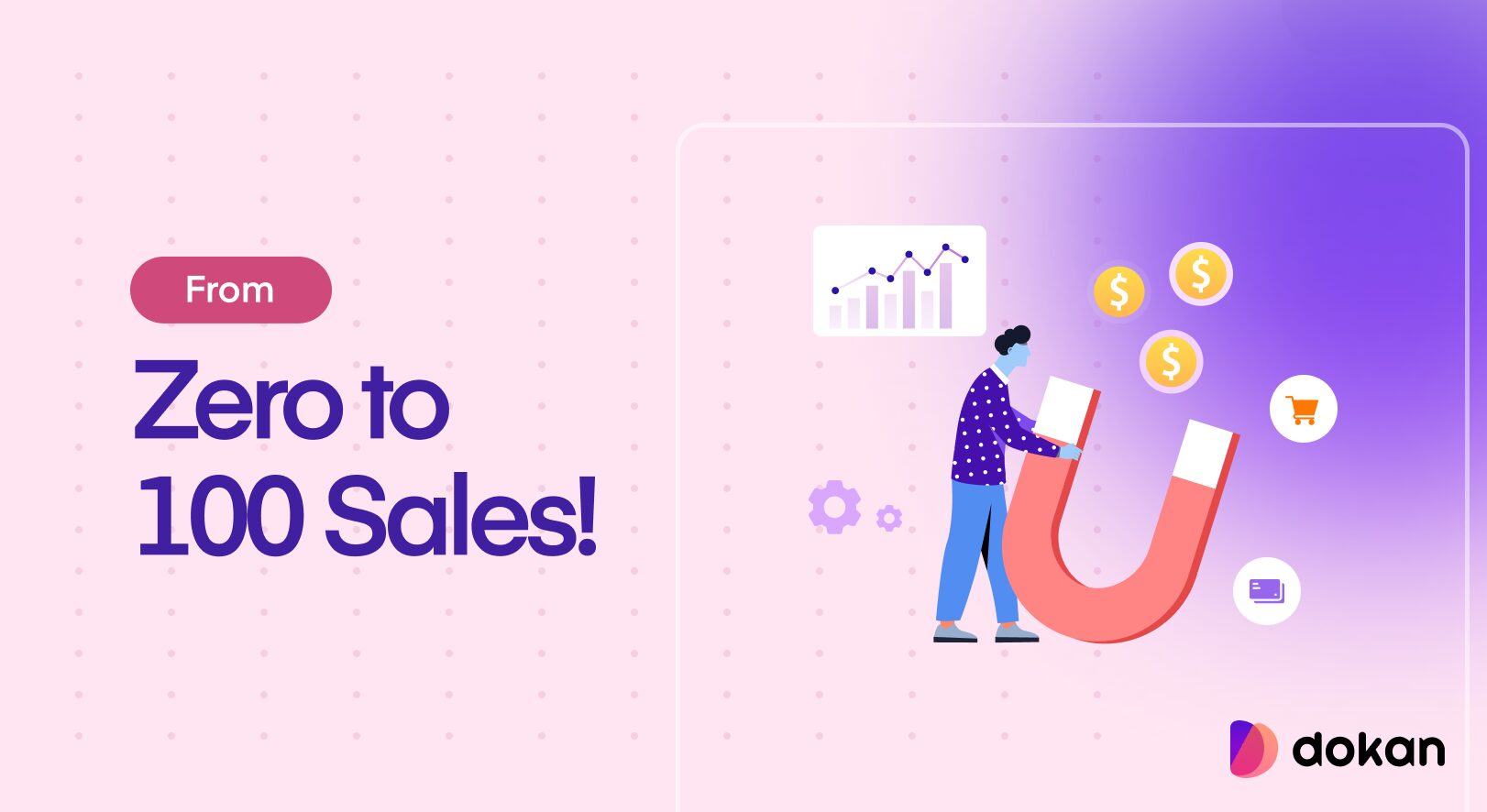
Let’s now take a look at the differences between outdated and modern lead generation tactics in the table below.
| Aspect | Outdated Tactics | Modern Tactics for 2026 |
| Approach | Cold emailing, generic ads, keyword stuffing, one-size-fits-all campaigns | Intent-driven content, AI personalization, influencer partnerships, social proof |
| Effectiveness | Low-quality leads, low engagement | High-quality, targeted leads, better engagement |
| Cost Efficiency | Expensive outbound campaigns | Cost-effective inbound content marketing |
| Visitor Readiness | Push for immediate sales, little nurturing | Focus on nurturing and relationship building |
| Engagement Tools | Static emails, basic web pages | Video marketing, automated email campaigns, personalized landing pages |
| Platform Support | Manual processes, minimal analytics | Integrated tools like Dokan for SEO, onboarding, and analytics |
Proven Strategies to Generate Vendor Leads
As already said, attracting vendors to your marketplace is one of the most important steps in building a thriving platform. Vendors expand your product catalog and make your site more appealing to customers. To do this effectively, combine strong content marketing, paid promotion, and community engagement as follows.

1. Content and SEO-Driven Attraction
Content marketing remains a game-changer for generating vendor leads. In fact, according to Content Marketing Institute (CMI), 74% of B2B marketers say content marketing has helped generate demand and leads, and it’s 62% cheaper than outbound marketing while producing leads that are six times more likely to convert.
Publishing helpful guides, case studies, and how-to blogs can attract sellers searching for better online sales channels. Websites that post blogs consistently generate several times more leads than those that don’t. For marketplaces, you could write about vendor success stories, online selling tips, or industry insights.
Here’s a guide on how to optimize your marketplace SEO.

2. Paid Advertising and Outreach
Paid promotion helps scale vendor acquisition quickly. Ads on Google, Facebook, or LinkedIn allow you to target business owners who are ready to sell online. It’s worth noting that 89% of B2B marketers use LinkedIn for lead generation, and the platform drives 80% of all B2B leads that come from social media.
For marketplaces that want to attract vendors in bulk, these channels are gold. However, advertising alone isn’t enough. Direct outreach can work wonders when personalized. Reaching out to potential sellers with data-backed messages about how much visibility they could gain on your platform makes a strong impression.
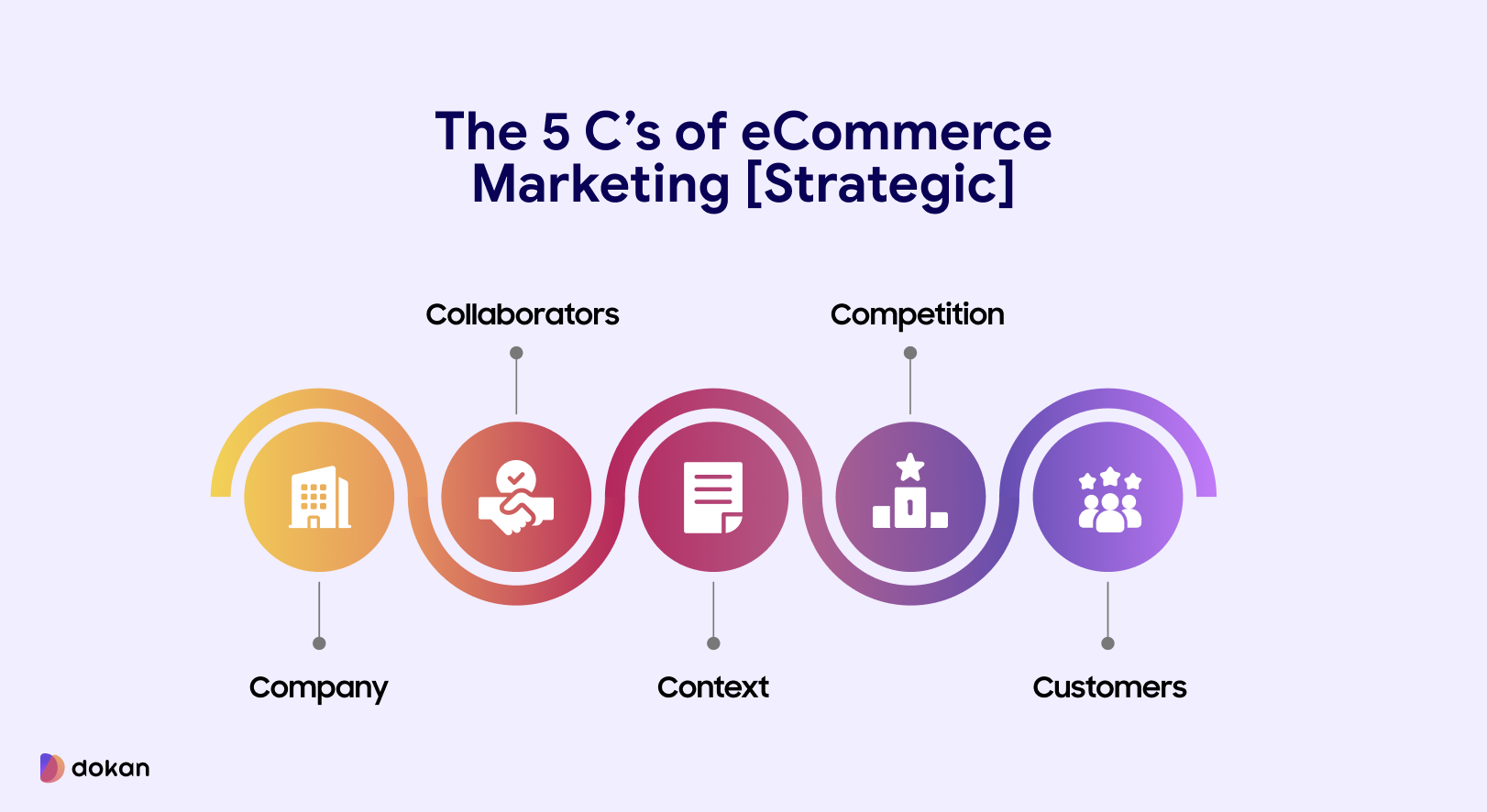
3. Community Building and Partnerships
Creating a community of sellers is one of the smartest ways to generate and retain vendor leads. Sellers feel more confident when they see others thriving on your platform. You can build this through platforms like Facebook groups and Discord servers. As the number of social media users surpasses 4.8 billion, the potential reach for building such communities is massive.
Partnerships with local entrepreneur networks, trade bodies, or startup hubs can also bring in high-quality leads. These organizations often have members actively looking for online sales channels. Collaborating with them helps you tap into ready-made audiences and grow vendor leads faster.
Learn how to improve customer experience with the seller badge.
4. Incentives and Onboarding Optimization
Offering onboarding bonuses can be a great motivator for new vendors. For example, providing zero commission for the first month or giving free promotion credits encourages sellers to test your platform. Since 79% of leads never convert due to poor nurturing, having a structured onboarding and nurturing flow is essential.
Vendors who receive regular support, training materials, and personalized tips are 47% more likely to stay active and succeed. A simple registration process and an accessible vendor dashboard also play a big role in conversion. Dokan’s onboarding tools, for instance, allow vendors to set up stores quickly and start selling within minutes.

Effective Tactics to Generate Customer Leads
Customer lead generation is all about visibility, trust, and engagement. Since the majority of online shoppers explore multiple options before buying, your strategy must keep their attention through consistent communication and a pleasant buying experience.

1. SEO and Organic Traffic
SEO still remains the foundation of customer acquisition. Focus on optimizing product categories, meta descriptions, and image alt texts. Write buying guides and trend posts that match customer search intent. When you combine SEO with video content, engagement grows even more. There is no doubt that customers today are highly influenced by watching videos.
However, remember that consistency is key. Publishing content regularly not only helps customers discover you through Google but also keeps your marketplace active and authoritative in your niche.
2. Social Media and Influencer Marketing
Social media is now the world’s biggest digital marketplace, with over 4.8 billion active users. About 65% of marketers say lead generation is their main goal on social platforms (Snov.io). According to Accenture, social commerce sales are forecasted to reach $1.2 trillion by 2025. That means your customers are already online.
You just need to engage them effectively. Sharing real product stories, customer reviews, and vendor highlights on Instagram or TikTok can make your marketplace more relatable and trustworthy. Influencer collaborations help amplify that trust. Because their followers see them as friends, not advertisers.

3. Email and SMS Marketing
Despite newer channels, email marketing continues to outperform most others. It offers some of the highest ROI in marketing. Moreover, according to Litmus, 41% of marketers rank email as their most effective sales tool. From Omnisend, automated email campaigns show a 2,361% higher conversion rate than traditional ones.
For marketplaces, this means sending targeted product recommendations, abandoned cart reminders, and vendor updates can dramatically improve results. When used strategically, email becomes both a nurturing and conversion powerhouse. Learn how to devise influencer marketing strategies.

4. Paid Channels and Retargeting
Paid ads help you reach new customer segments quickly, while retargeting helps you re-engage those who left without buying. Using personalized landing pages in your PPC campaigns can improve ad performance. The average pop-up form converts about 3.09%. So, even small design and copy optimizations can make a noticeable difference.
Retargeting is particularly useful for nurturing the 96% of visitors not ready to buy. Showing them tailored ads or offering small discounts can bring them back and boost conversion rates over time. Learn how to build digital marketing plans for eCommerce marketplaces.
5. Offline and Partnership Plays
Offline strategies still play a big role in generating customer leads. Many people still discover brands through physical touchpoints like local events, trade fairs, or community sponsorships. Participating in such activities builds real-world credibility for your marketplace and helps potential customers trust your platform more easily.
You can also display QR codes or short URLs at events that lead visitors directly to your marketplace site. Partnerships with other businesses can also help you capture high-quality leads. For example, collaborating with courier companies, payment gateways, or retail brands creates win-win situations.

Hybrid Strategies for Vendors and Customers
A marketplace grows steadily only when both vendors and customers grow together. If one side falls behind, the other side eventually slows down too. That’s why smart marketplace owners use integrated strategies that bring both groups into a single growth loop. These strategies make your platform more engaging, reliable, and profitable in the long run.
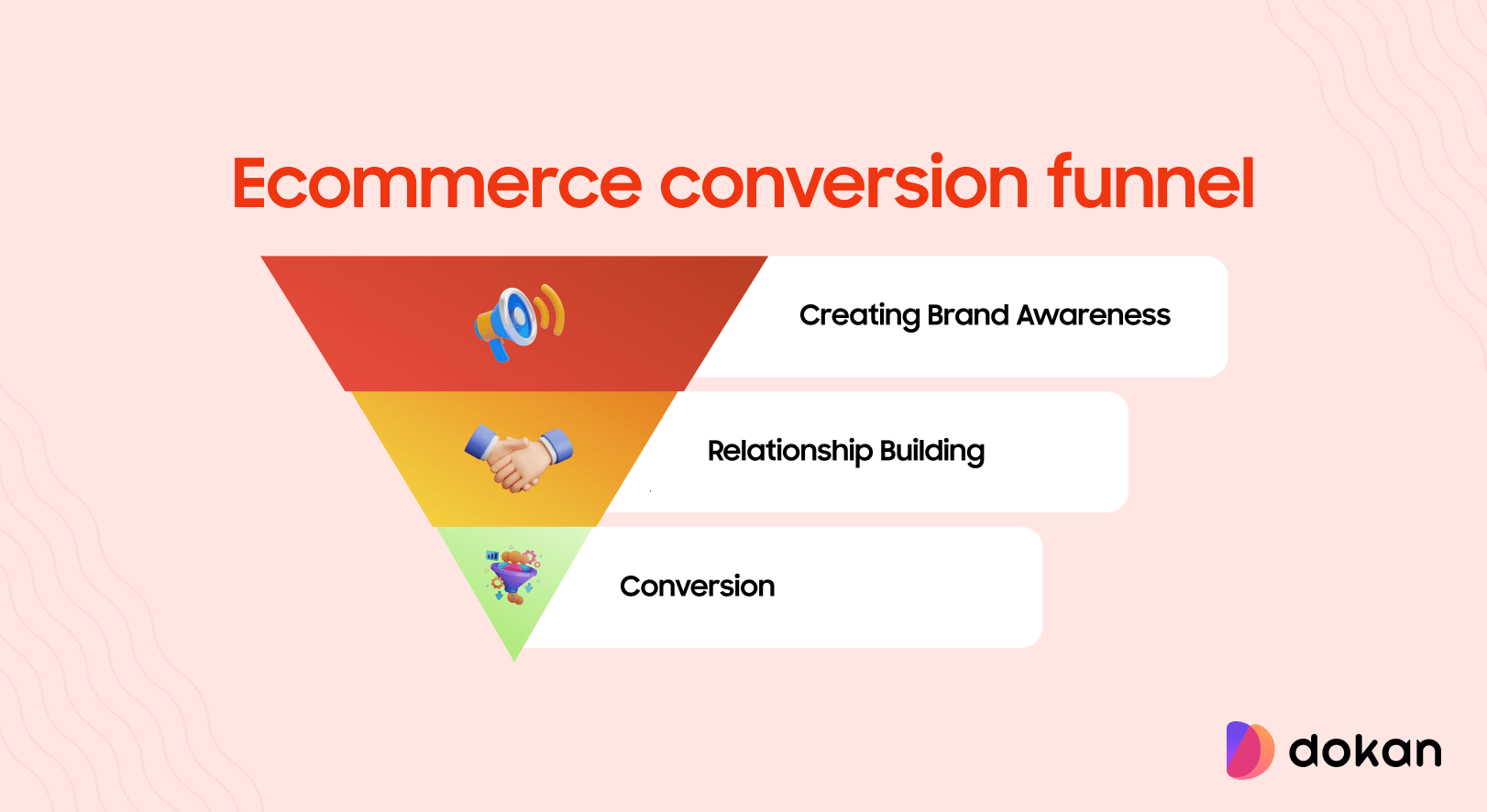
Below are a few of the most effective ways to connect and grow both sides of your eCommerce marketplace at the same time.
1. Cross-Promotion Between Vendors and Customers
Cross-promotion is one of the most direct and cost-effective ways to grow both sides together. When vendors promote their stores through your marketplace’s social media, blog, or email newsletter, they reach more customers. In return, every time customers engage with those promotions, it increases visibility for your platform and vendor motivation.
You can also feature ‘Vendor of the Month’ stories, bundle popular products from multiple sellers, or send ‘Shop from Local Vendors’ email campaigns. These actions create a shared promotional loop that benefits everyone involved.

2. Build a Referral System
Referrals have always been one of the most reliable growth tactics in eCommerce. But for marketplaces, it’s even more powerful when you reward both sides. For instance, you can offer customers discount coupons for referring new shoppers or vendors, and at the same time, give vendors credit for bringing in other sellers.
This creates a continuous flow of new leads without heavy ad spending because people trust recommendations from peers more than ads. So, by using referrals (like testimonials or social posts), you can build community-driven growth instead of just transactional relationships.
Explore tips to boost sales with organic marketing.
3. Personalize Experiences with Data and AI
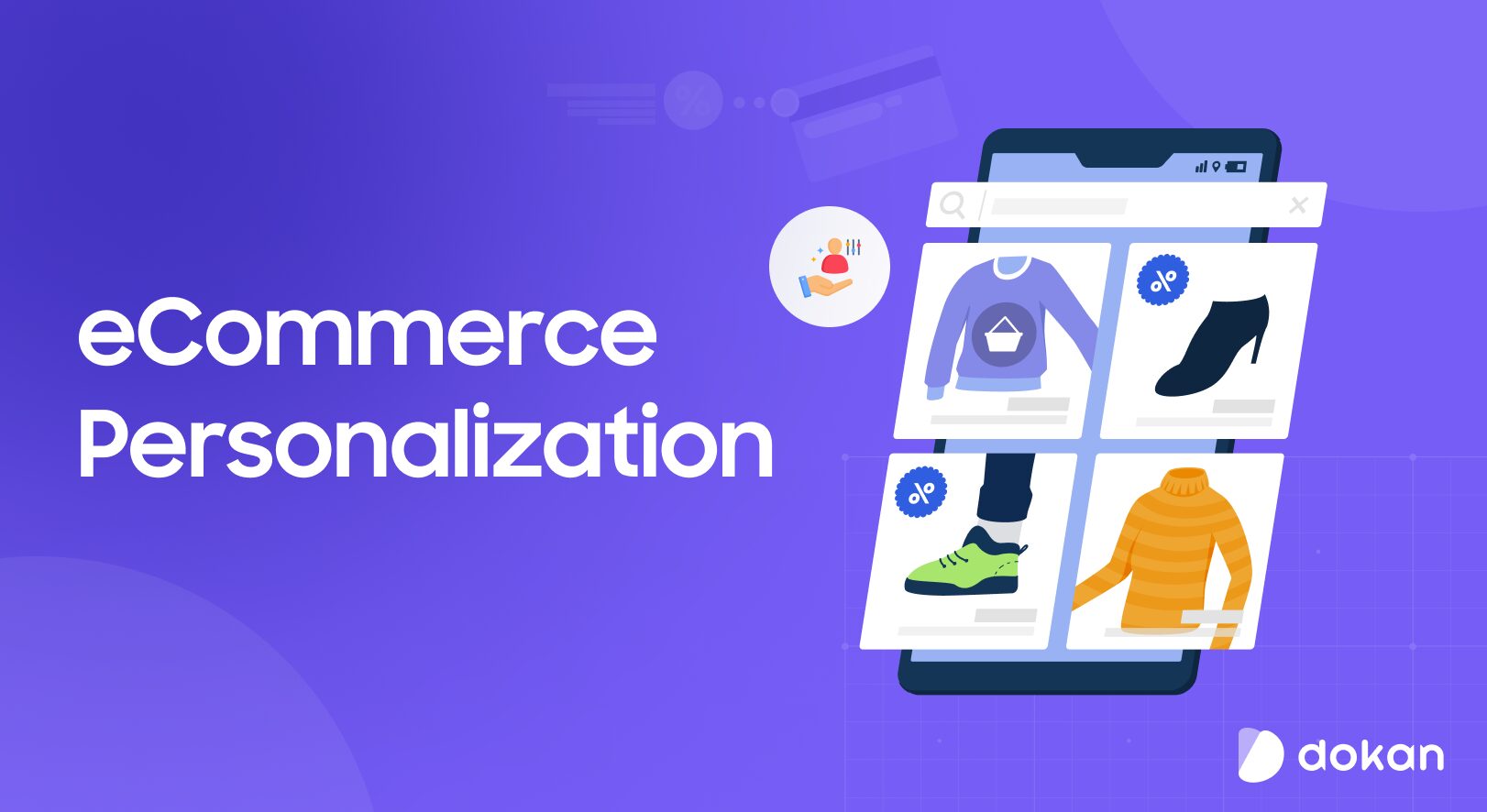
Personalization is no longer optional in 2026 and beyond. It’s a requirement for strong lead nurturing. According to MarketingSherpa, 79% of leads fail to convert due to poor nurturing, and personalized recommendations can often fill that gap. For example, AI tools can suggest the right vendors to customers based on browsing behavior.
It can also suggest promotional strategies to vendors based on their sales data. When both vendors and customers receive personalized experiences, satisfaction and conversion rates are bound to improve. Automated workflows and AI chatbots can also assist in this area. Check the 5 C’s of eCommerce marketing.
4. Create a Shared Loyalty Program
A loyalty program that connects vendors and customers strengthens the community and increases lifetime value. You can design it so customers earn points for purchases and vendors earn credits for sales, reviews, or referrals. Later, both can redeem rewards like promotion slots, discounts, or cashback. This creates a sense of collaboration.
Loyalty programs are especially useful in improving retention, which helps increase ROI over time. With the average eCommerce conversion rate below 2%, every repeat purchase or vendor renewal matters (Shopify). So, keeping existing users engaged through shared rewards ensures you don’t have to spend more to constantly attract new leads.

5. Run Events Involving Both Groups
Joint events are a great way to make your marketplace feel alive. These can include seasonal sales, online expos, webinars, or live video sessions where vendors showcase their products directly to shoppers. According to studies, video marketing increases website traffic for 87% of marketers and influences customers to make a purchase.
Such campaigns build excitement, trust, and awareness. Besides, hosting webinars or product-launch events for vendors also encourages participation and visibility. When customers see active vendors demonstrating products, it improves trust and encourages purchases. Meanwhile, vendors feel supported and recognized.

6. Maintain Continuous Communication
Sustaining growth requires regular, meaningful communication with both groups. For customers, you can use newsletters, product updates, and feedback requests. For vendors, share performance reports, training tips, and upcoming marketplace opportunities. The goal is to make sure both sides never feel disconnected.
According to Adobe Business, nurtured leads are 47% more likely to make a purchase. So, continuous engagement builds long-term stability. It prevents churn and keeps your platform active even during slower business periods. You can automate parts of this process through CRM systems and email marketing tools.
Use Dokan to Build Your Marketplace and Drive Lead Generation
The success of modern marketplaces depends heavily on the right tools. You can’t rely on manual work or guess-based marketing anymore. If you are thinking of creating an online marketplace or struggling with your current technology, you can try out the Dokan marketplace builder platform.
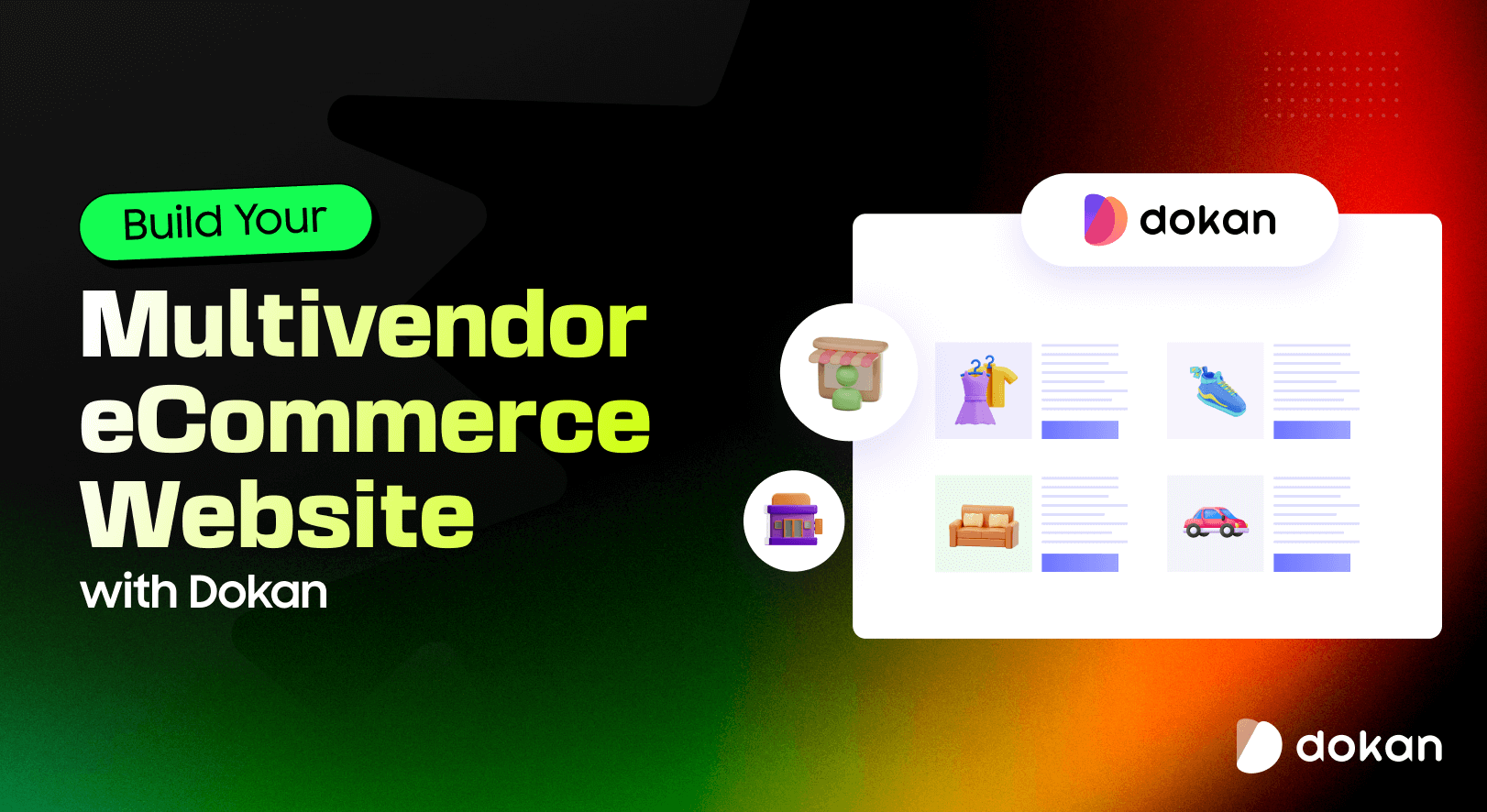
Dokan is a powerful WordPress plugin that helps users create and manage a complete multivendor eCommerce marketplace. It works on top of WooCommerce, turning a regular online store into a full marketplace where multiple vendors can register, create their own stores, and sell products under one platform.
Each vendor gets a personalized dashboard to manage their products, orders, coupons, and earnings. It offers a wide range of modules and integrations that make running a marketplace smooth and scalable. These include tools for SEO, vendor subscriptions, store support, live chat, reviews, shipping, commission tracking, and more.
Let’s briefly explore the tools, modules, and technologies that Dokan offers to drive lead generation in the eCommerce marketplaces.
| Dokan Tools & Modules | How They Help Generate Vendor Leads | How They Help Generate Customer Leads |
| Vendor Registration & Onboarding | Simplifies the process for new sellers to sign up and start selling quickly | Creates a larger variety of stores and products for customers to explore |
| Vendor Dashboard | Gives vendors full control over their store, products, and earnings | Ensures smoother order processing and reliable service |
| Store SEO Module | Helps vendors optimize their store pages for Google | Makes each store discoverable in search engines |
| Vendor Subscription Plans | Allows marketplace owners to offer tiered membership plans with added benefits | Indirectly improves buyer experience as premium vendors often invest in better service |
| Review & Rating System | Builds trust among potential vendors by showing a fair and transparent marketplace | Helps customers make informed buying decisions based on ratings and reviews |
| Store Support & Live Chat | Encourages vendor-customer communication, creating a reputation for reliability | Gives buyers a direct support channel to convince in more purchases |
| Discount & Coupon Module | Gives buyers a direct support channel to convince them to make more purchases | Attracts customers with offers and discounts, improving conversion rates and driving repeat purchases |
| Analytics & Reports | Provides vendors with performance data to identify areas for growth | Allows marketplace owners to study customer behavior and optimize marketing tactics |
| Multi-Vendor Dashboard for Admins | Helps marketplace owners manage and monitor vendor activities efficiently | Enables better customer service through simplifed operations and issue resolution |
| Store Page Customization Tools | Enables better customer service through simplified operations and issue resolution | Offers customers visually appealing and trustworthy stores |
In addition to these, many exciting features and modules can support your lead generation objectives. Explore them by clicking the button attached below.
Successful Marketplace Lead Generation Strategies: Real-World Examples
Studying how established marketplaces grow can provide valuable insights and proven tactics. In this section, we’ll explore real-world examples of leading marketplaces and the lead generation strategies they used to achieve remarkable growth.
1. Amazon – Content, SEO, and Personalization

Amazon is one of the best examples of using content-driven SEO and data personalization to attract both vendors and customers. They publish keyword-optimized product pages, blog content, and buying guides that rank high in search engines. This generates millions of organic leads daily.
On the vendor side, Amazon’s Seller Central provides clear onboarding steps, sales analytics, and promotional tools — much like Dokan’s vendor dashboard. Their personalized product recommendations, reviews, and loyalty programs (like Amazon Prime) nurture customer leads effectively.
2. Etsy – Community Building and Organic Growth

Etsy started small but focused on building a community-driven ecosystem. It attracted independent creators through low barriers to entry and transparent policies. For customers, Etsy’s use of email marketing, SEO-optimized listings, and storytelling around handmade products helped create emotional engagement.
They also run seasonal campaigns and social media storytelling to highlight unique vendors and strategies that closely mirror Dokan’s community and campaign-building modules.
3. Alibaba – Tiered Vendor and Global Partnerships
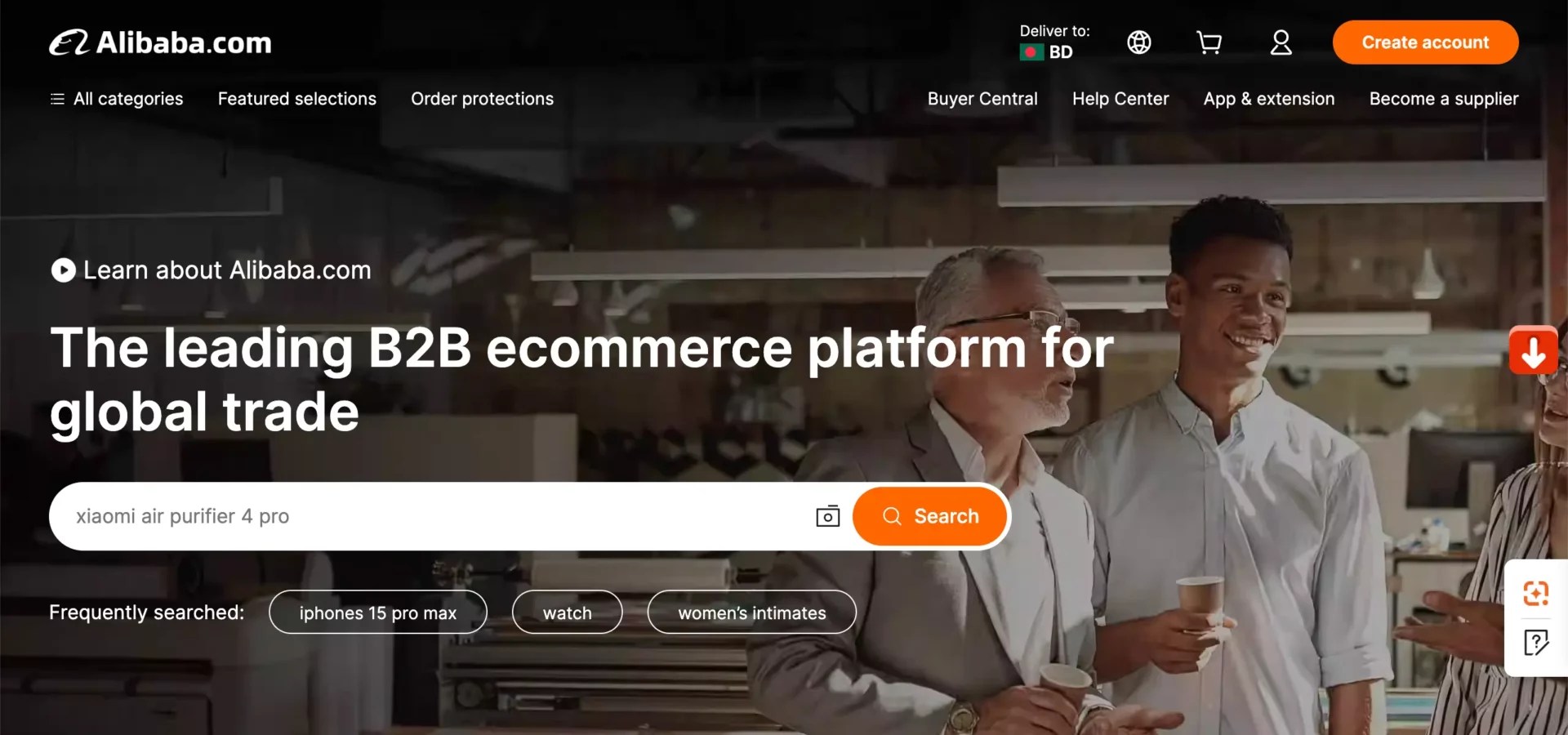
Alibaba scaled globally by focusing on vendor acquisition first. Their Gold Supplier program works like a subscription-based vendor plan. This gives sellers access to more visibility and credibility, which is similar to Dokan’s vendor subscription module.
They also built strong partnerships with logistics and finance providers to make it easier for businesses to join their ecosystem. Through webinars, guides, and content marketing, Alibaba generated high-quality B2B vendor leads while offering trust-building programs that convert buyers into repeat customers.
4. Flipkart – Paid Ads and Referral Ecosystem
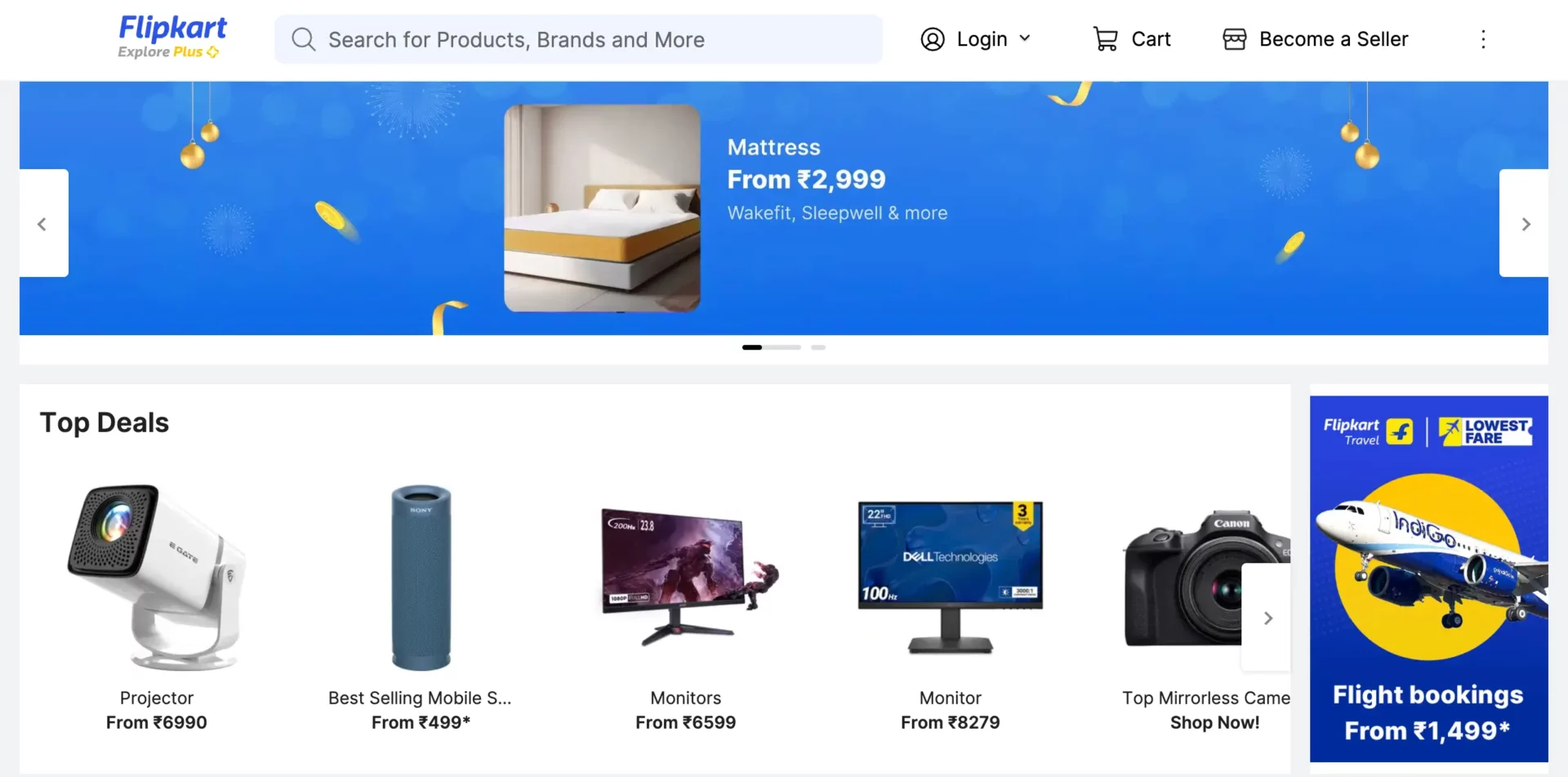
Flipkart (India’s leading marketplace) has used paid ads, referral campaigns, and loyalty programs to expand both vendor and customer bases. Their affiliate marketing system helped them reach new audiences fast, while vendor-focused webinars and training boosted seller confidence.
Flipkart’s integration of data analytics to personalize product recommendations helped improve conversion rates. This proves the power of tracking and optimizing lead generation performance.
5. Walmart – Strategic Vendor Outreach

When Walmart expanded online, it focused on acquiring trusted vendors through direct outreach and partnerships with established brands. Their strategy included press campaigns, sponsorships, and SEO-based product listings to compete with Amazon.
They built a vendor trust system that verifies sellers and ensures transparency. This makes Walmart Marketplace appealing to both customers (through reliability) and vendors (through reach).
Conclusion
Generating leads for an eCommerce marketplace is a continuous process that requires careful attention to both vendors and customers. The key is to build a system that attracts quality sellers while engaging buyers effectively. By consistently applying the strategies covered above, you can ensure your marketplace remains competitive and continues to grow steadily.
Success in marketplaces is not just about traffic or numbers. It’s about creating experiences that empower vendors and delight customers. Every feature, campaign, and interaction can be a step toward growth and sustainability. With dedication and the right tools, you can transform your marketplace into a thriving hub where vendors succeed and customers return.
If you have any questions or want us to add any points to this discussion, let us know in the comments. But before ending, if you are interested in Dokan, it has a free and a premium version. You can get them by clicking the buttons attached below.
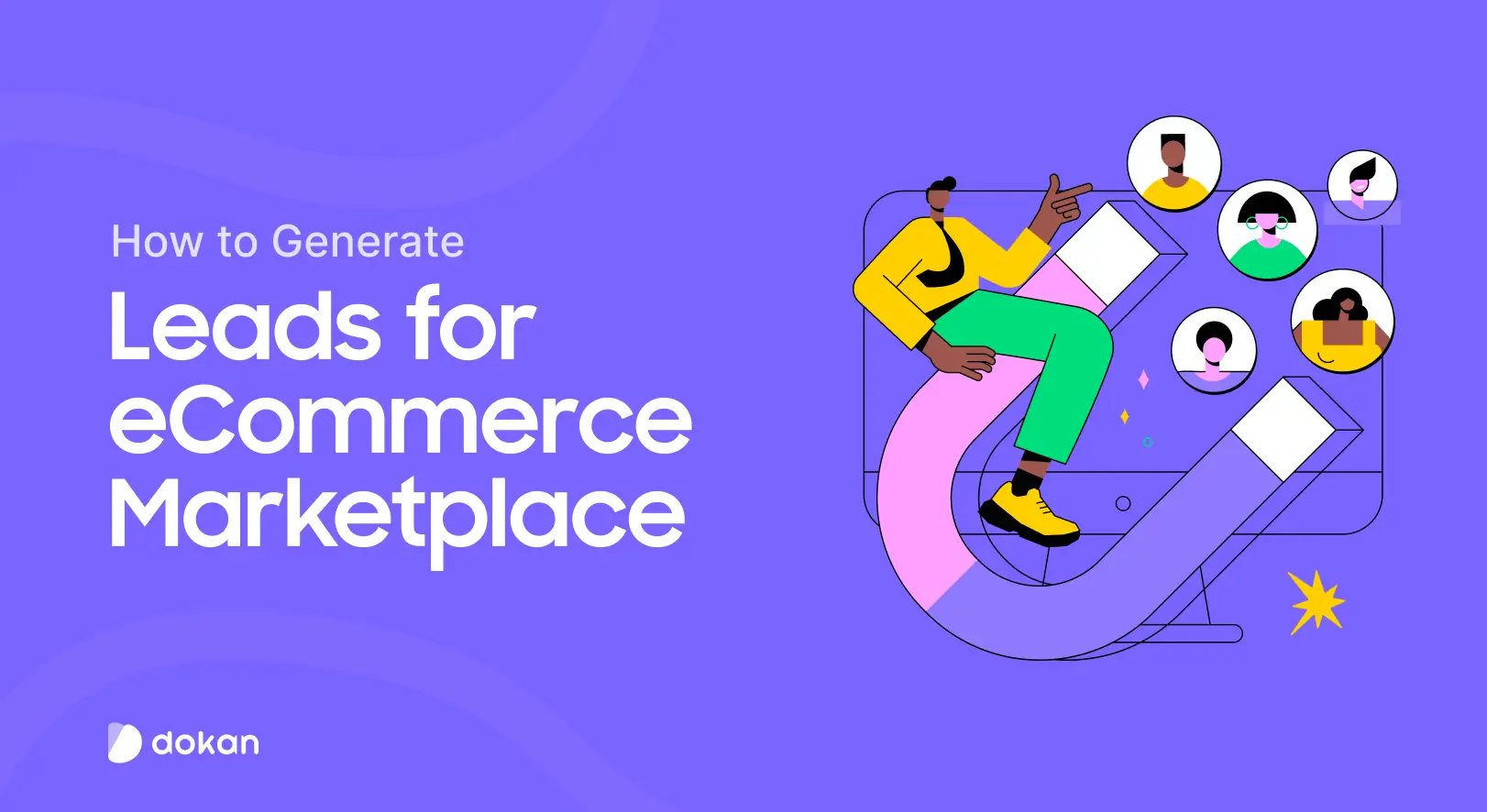

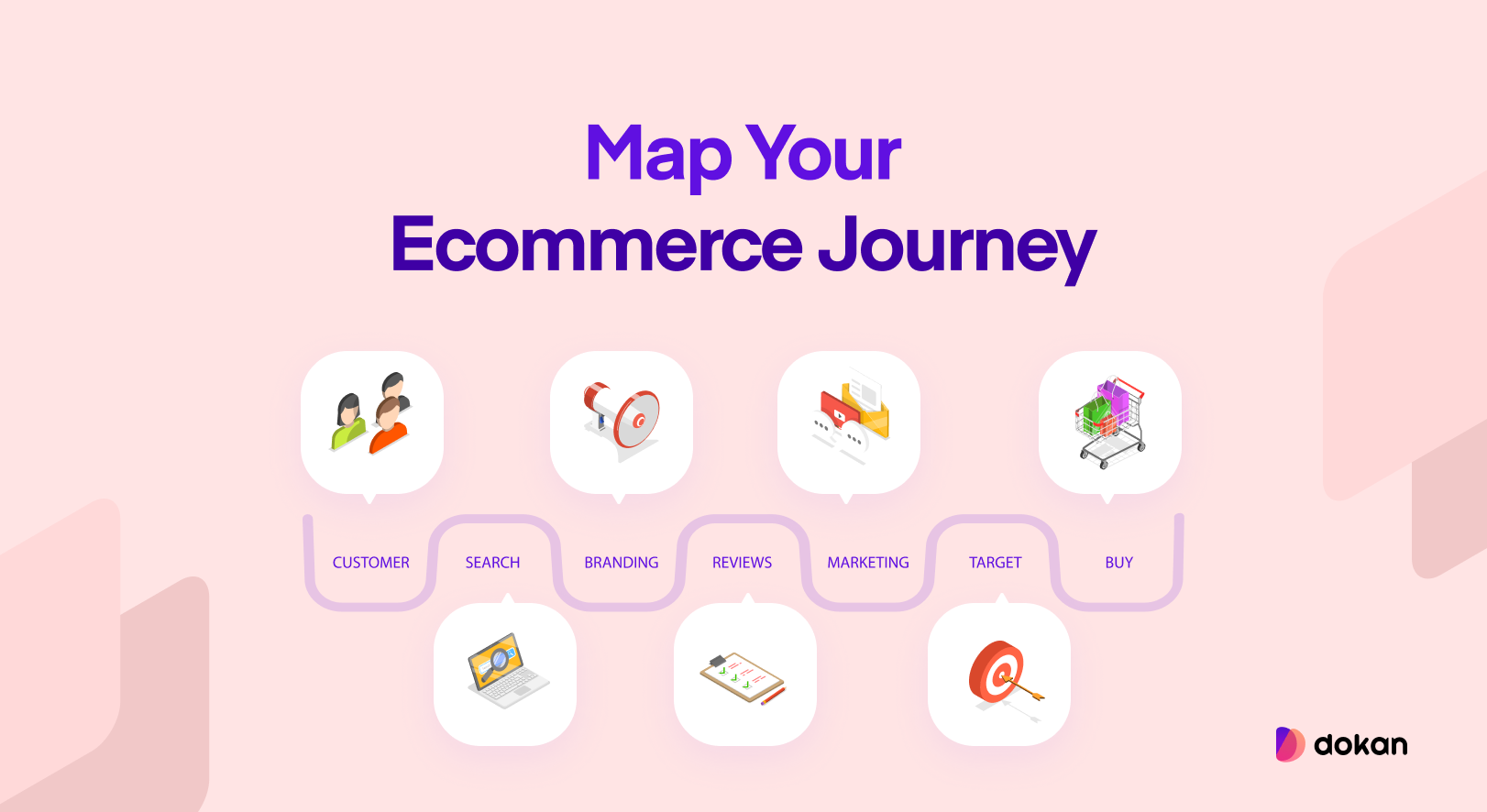

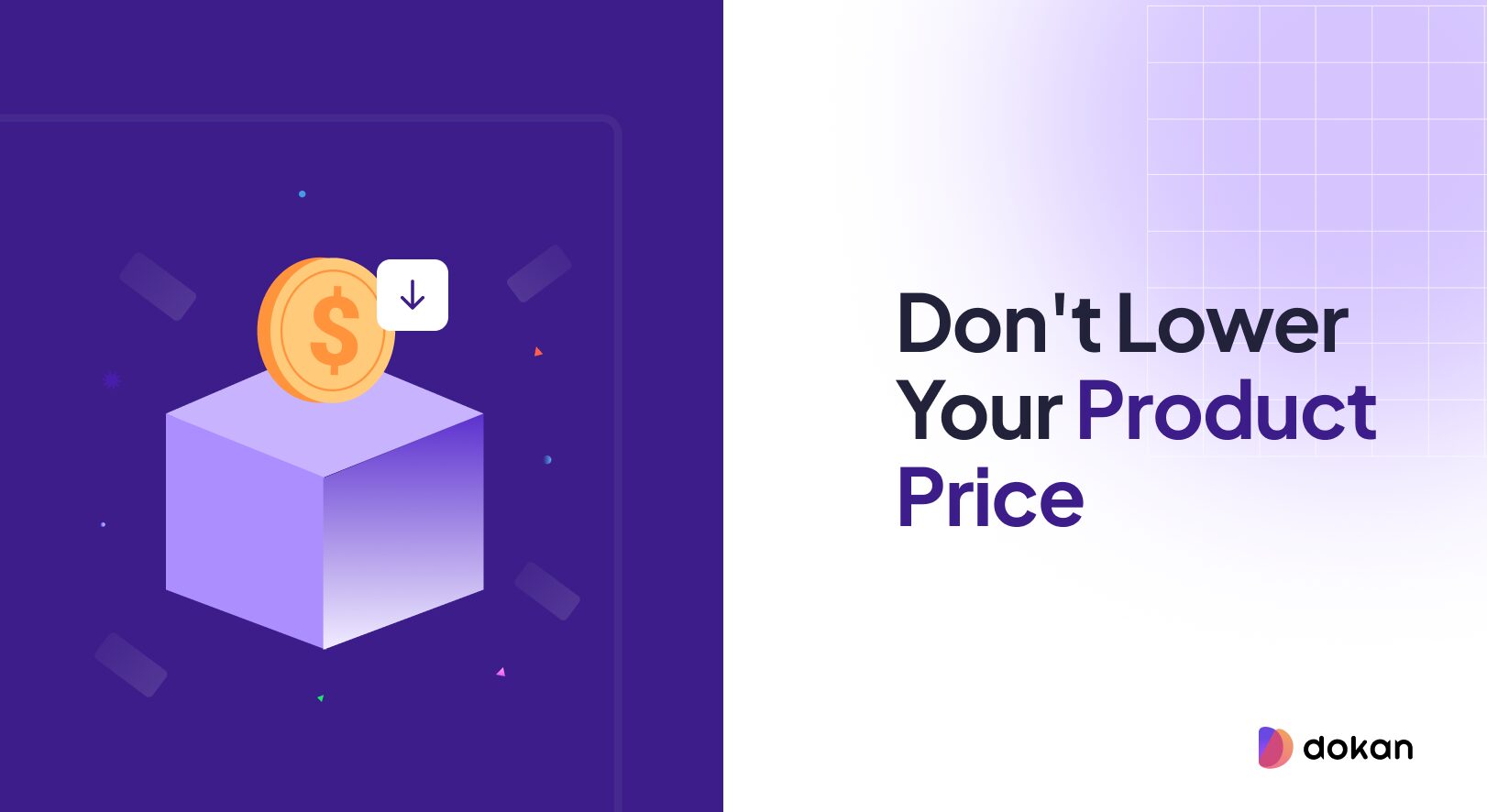

Leave a Reply